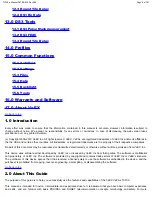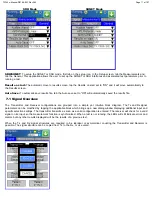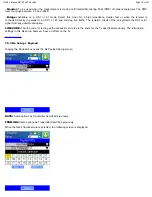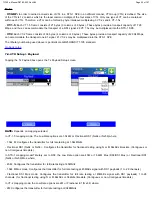
aka UPC) and note the damage level associated with each Transceiver. Customers opting to use or provide their own SFPs
should ensure that the transceivers are multi-rate and that digital diagnostics are supported – this enables the optical power and
other measurements when in SONET optical test mode. Furthermore, only SFPs with low jitter and good optical extinction ratio
should be used. To comply with ROHS and other local government requirements, only compliant SFP transceivers should be
used.
5.5 SMA Interface
- Unbalanced, NRZ electrical clock input at 1.544Mbit/s or 1,544MHz . When equipped with the E1 option, 2,048Mbit/s and
2,048MHz signals for Tx are also supported.
5.6 LEDs
The TX150 is equipped with four fixed LEDs for test applications and one LED for Power status.
The
Power LED
indicates the power state of the unit. The LED is off when the unit is powered off. The LED is green when the
unit is powered on. The LED is orange when the unit is connected to the AC Mains and powered off. The internal Lithium Ion (Li-
Ion) battery is charged automatically when the unit is connected to the AC power adapter. Prior to using the unit for the first time,
a full charge and discharge cycle is recommended to condition the battery. Full charge is reached after 6-7 hours of continuous
charging with the unit switched off.
The
Signal LED
indicates that a valid PDH/DSn or SONET signal is present at the test interface. The LED is green when
sufficient optical power or electrical level is available. The LED is red when a valid PDH/DSn or SONET signal is not detected.
The
Frame LED
indicates that a PDH/DSn or SONET signal with correct framing at all levels of the received signal is detected.
The LED is green when correct framing is detected and is red when no framing is detected.
The
Pattern LED
indicates detection of the expected test pattern. The LED is green when there is correct detection and it is
red when expected test pattern is not received.
The
ALM/ERR LED
is linked to the alarms and error functions and counters. The LED is solid red when there is an alarm or
error condition in the received signal. A red flashing LED indicates that an error or alarm has occurred but is no longer present -
This is called the history function. In order to reset the history condition on the Signal, Frame, Pattern or Alarm/Error LEDs, press
the function key on the rubber keyboard (O -> O).
6.0 Menus - Home
TX150 e-Manual D07-00-023 Rev A02
Page 9 of 107










































